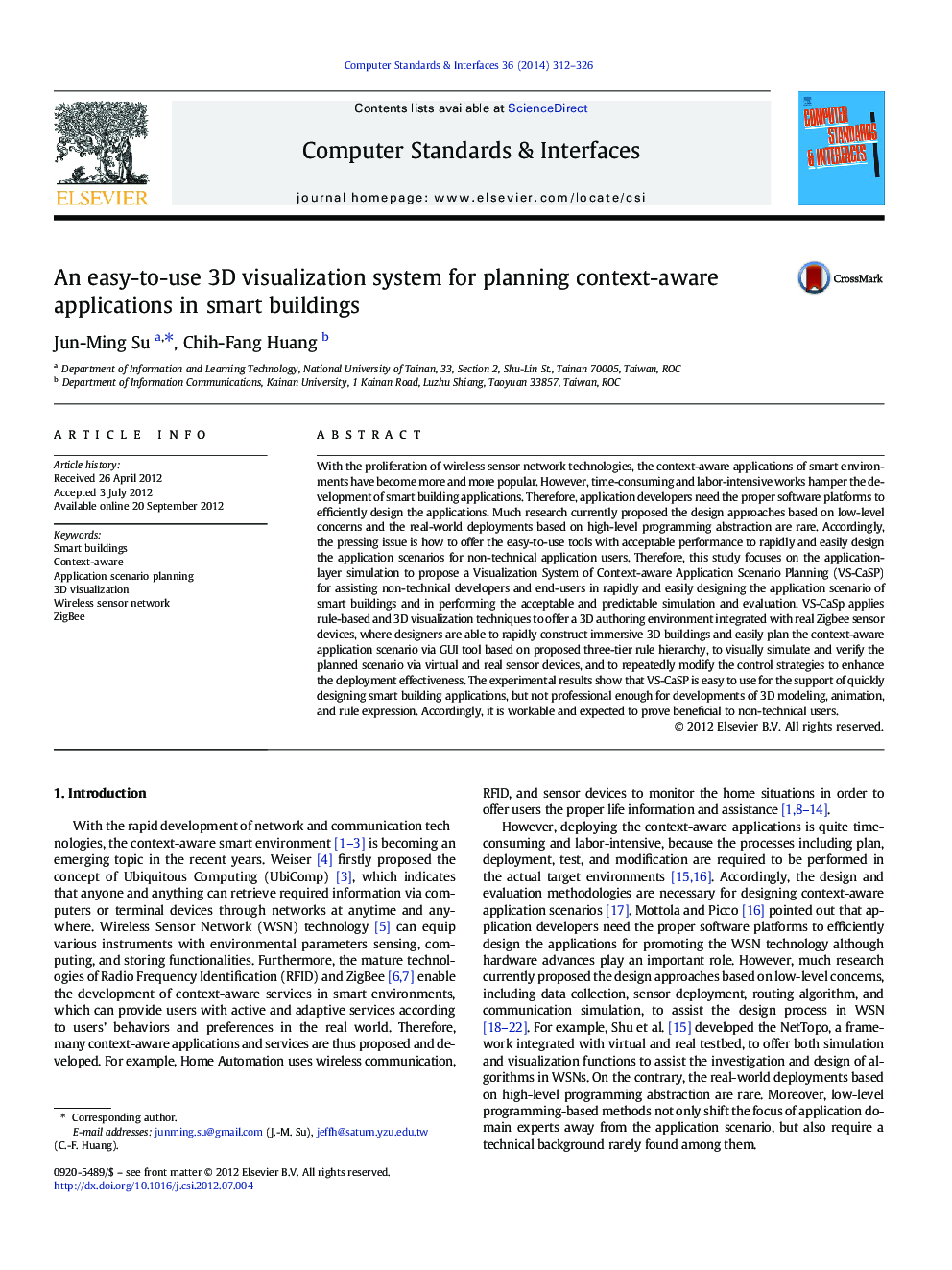| Article ID | Journal | Published Year | Pages | File Type |
|---|---|---|---|---|
| 454790 | Computer Standards & Interfaces | 2014 | 15 Pages |
With the proliferation of wireless sensor network technologies, the context-aware applications of smart environments have become more and more popular. However, time-consuming and labor-intensive works hamper the development of smart building applications. Therefore, application developers need the proper software platforms to efficiently design the applications. Much research currently proposed the design approaches based on low-level concerns and the real-world deployments based on high-level programming abstraction are rare. Accordingly, the pressing issue is how to offer the easy-to-use tools with acceptable performance to rapidly and easily design the application scenarios for non-technical application users. Therefore, this study focuses on the application-layer simulation to propose a Visualization System of Context-aware Application Scenario Planning (VS-CaSP) for assisting non-technical developers and end-users in rapidly and easily designing the application scenario of smart buildings and in performing the acceptable and predictable simulation and evaluation. VS-CaSp applies rule-based and 3D visualization techniques to offer a 3D authoring environment integrated with real Zigbee sensor devices, where designers are able to rapidly construct immersive 3D buildings and easily plan the context-aware application scenario via GUI tool based on proposed three-tier rule hierarchy, to visually simulate and verify the planned scenario via virtual and real sensor devices, and to repeatedly modify the control strategies to enhance the deployment effectiveness. The experimental results show that VS-CaSP is easy to use for the support of quickly designing smart building applications, but not professional enough for developments of 3D modeling, animation, and rule expression. Accordingly, it is workable and expected to prove beneficial to non-technical users.
► A visualization system facilitates high-level smart building application designs. ► We define three-tier rule hierarchy to easily plan the context-aware scenarios. ► Applications with 3D animated models can be rapidly constructed and verified. ► Experimental Results show satisfied Ease-of-Use and Supportability of our proposal.
